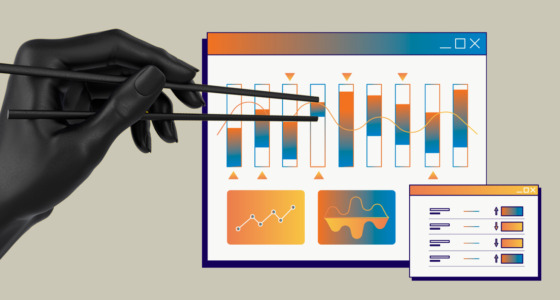

Trading is high-risk, high-reward. But before you can generate any rewards, you should handle the risks — otherwise, one poor trade may cost you dearly. For example, the largest single trading loss in Wall Street history was worth $9 billion. A former Morgan Stanley bond trader wanted to go against the US real estate market. Little did he know his short trade on credit default swaps was about to be hit by the 2008 economic crisis.
It’s important to establish a few things. Is it possible to make every trade profitable? No, all traders have losing trades. But are there risk management tools that can help you avoid and minimize losses in many trades? Yes! Below are seven of them to try when trading.
Always have a trading plan
Your trading plan shouldn’t be an outline of someone else’s approach. For all you know, others may have unlimited capital and no intention to cut losses. Your plan should include anything that will guide your decision-making, such as:
- Your motivation for trading
- The amount of time and effort you want to commit
- Your short-term and long-term trading goals
- Your risk tolerance (later on, you can successfully combine low-, medium-, and high-risk investments in a balanced portfolio)
- Your trading budget (how much capital you can put at risk)
- Markets you plan to trade in
Overall, this point is about having a systematic method for setting objectives and determining your trading style. This will define the parameters of your ideal trade.
Choose the right strategies
You can’t learn how to trade options without loss if you barely know what contributes to a losing trade. For instance, options strategies can be categorized based on time value, volatility, or even interest rates. And depending on the strategy used, if a trade moves against them, the trader will either risk an unlimited amount or just a small prepaid amount of the premium. Keep that in mind and avoid strategies that require substantial capital.
Also, be prepared to adapt your strategies — something that worked one day might not work on another. To be flexible, make sure you have mastered a few trading strategies and can apply them to different assets and market cycles when needed.
Use reasonable leverage
On paper, leverage can potentially bring large returns with a very small investment. And yes, when properly used, opportunities from leverage may pay off. But this tool can amplify losses just as easily and turn a market correction into a full-on crash.
If you want to avoid a big loss, you shouldn’t chase the prospects of massive payouts either. As a trader, you are in full control of the amount of leverage a trade will have (if any). Base your position size on the account balance or, even better, on the funds you recently made. Thus, you’ll only be putting your surplus on the line, not your available trading capital.

Place a stop loss on every trade
A stop loss is an order to buy or sell an asset once it reaches a certain price. A position with a stop loss is exited automatically by the broker regardless of when the spot price reaches the predetermined level. So, you don’t have to monitor your trades to catch a loss early.
A stop loss is usually included in standard trading terminals as a no-cost insurance policy. You’ll only be charged your regular commission for processing a trade. To determine where to place your stop loss, assess your risk tolerance. 10%-20% is an optimal level for many traders.
If you want to know how to trade without losses whatsoever, just place a stop loss at the price level you bought the asset for. This would mean setting the stop loss as close to the position as 1%. It could make the lifespan of your trade very short. But on the brighter side — no losses at all.
Diversify your portfolio and hedge your positions
By holding inversely correlated assets in your portfolio, you reduce its overall volatility and risk exposure. Let’s say you have a stock in mind. Before buying or right after, research alternatives that tend to move in the opposite direction of your main stock. This will augment your investment and limit or even reverse a potential loss.
Another, quite radical approach is downside hedge protection. This involves buying products with inverse returns — when one position goes up, another one invariably goes down. For example, if you entered a long position on S&P 500, you can then purchase an inverse ETF, which would profit from a decline in the value of the underlying benchmark.
Follow the news
World politics, economic trends, even the weather and entertainment news — everything can impact the markets. The more you understand the past and current markets, the better trading decisions you will make. You can capitalize on specific events or exit just before the market enters a bearish zone. If you catch an early change in the environment, you can prevent many losses.
Waking up before the trading hours and going through the entire market report may sound too extreme. But the idea is to stick to a certain regimen — catching up with the daily news, following a weekly market update, examining quarterly reports, etc.
Keeping a record of your trading activity
Keeping a record of your trades starts before you make any. This perfectly ties in with the first point — in the trading plan, you have already identified what information you’d like to record. Now, you need to write down everything that will help you assess the trading system’s performance. A few tips:
- Make an electronic spreadsheet
- Include all relevant data + personal observations
- Mark any changes you make in open positions
- Write comments for completed trades
- Notice patterns in your trading results
- Write down how you recover from a losing streak (important!)
It’s not reasonable to expect every trade to bring returns. But a trading journal will help you see if all your trades in a certain period result in a net profit. If not, make serious changes to achieve a positive ROI.
Takeaway
While trading is normally associated with high risk, you can turn to several basic strategies to limit it. It’s unlikely that you’ll have zero losses (unless you make zero trades), but it’s entirely possible to reduce them through informed decisions and protective mechanisms.








